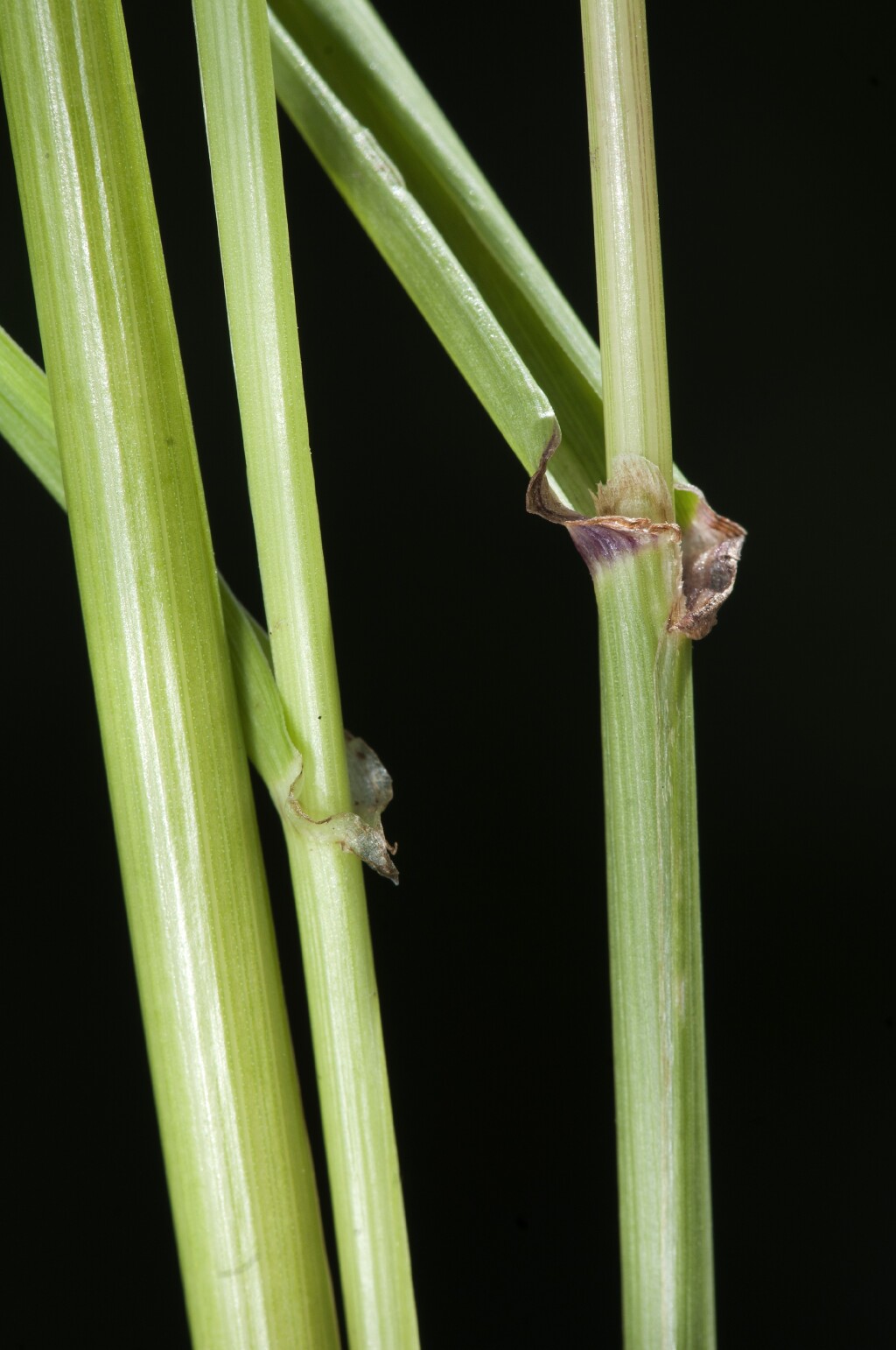Lolium multiflorum
Lam. Italian Rye-grassTufted, short-lived perennial, culms erect, to 130 cm high. Leaf-blades flat when mature, convolute when young, to 20 cm long and 10 mm wide; ligules to 4 mm long; auricles usually present. Spike to 40 cm long; rachis c. 1 mm diam. Spikelets 10–22-flowered, 5–20 mm long (excluding awns); glume mostly from one-quarter to half as long as the spikelet; lemma oblong-lanceolate; awn 4–14 mm long. Flowers Sep.-Dec.
MuM, Wim, GleP, VVP, VRiv, MuF, GipP, OtP, Gold, CVU, DunT, EGL, EGU, HSF, HNF, Strz. Naturalised in all States except NT, also widely in other temperate countries. Indigenous in southern Europe, south-western Asia and northern Africa. Of scattered occurrence on roadsides and other weedy sites, mostly in the south of the State. Occasionally used for pasture, particularly on wetter ground.
Useful as a pasture grass in some situations, but less common than L. perenne or L. rigidum. It hybridizes with both of these species, the hybrid formed with L. perenne often referred to as L. ×hybridum Hausskn.
Walsh, N.G. (1994). Poaceae. In: Walsh, N.G.; Entwisle, T.J., Flora of Victoria Vol. 2, Ferns and Allied Plants, Conifers and Monocotyledons, pp. 356–627. Inkata Press, Melbourne.
 Spinning
Spinning




